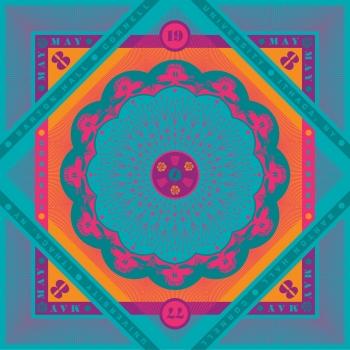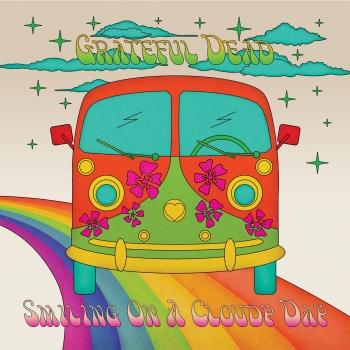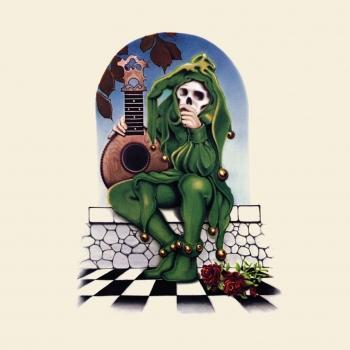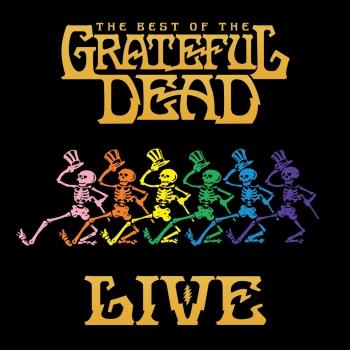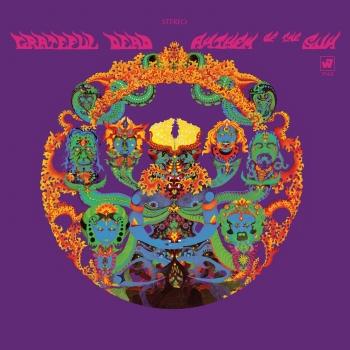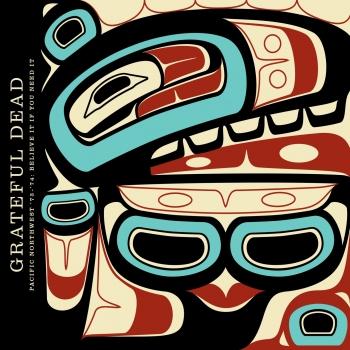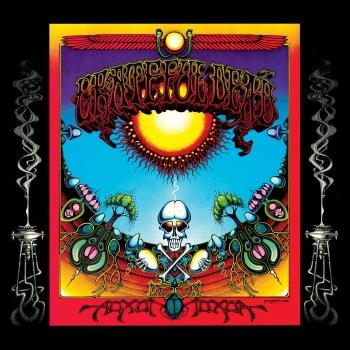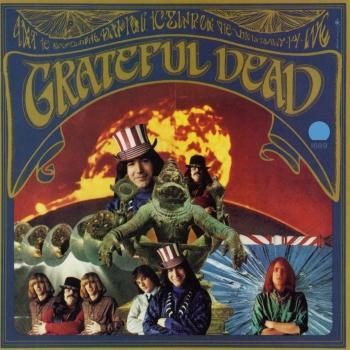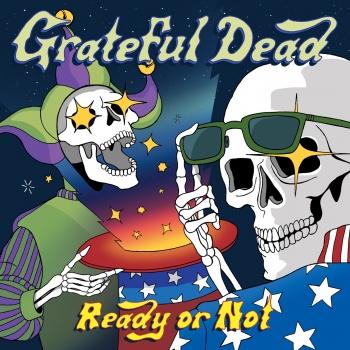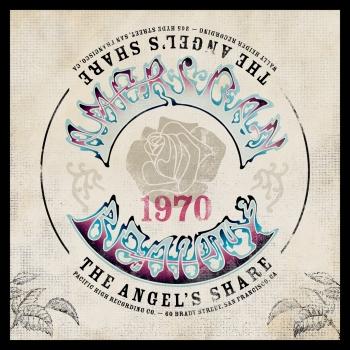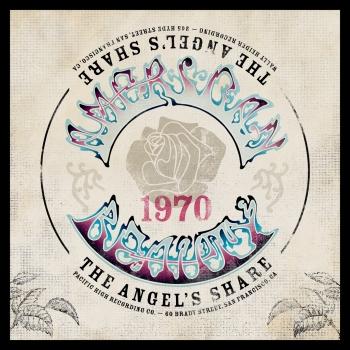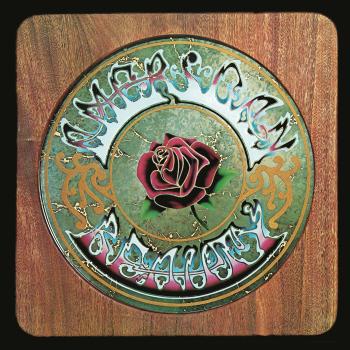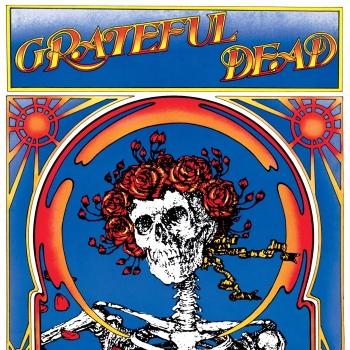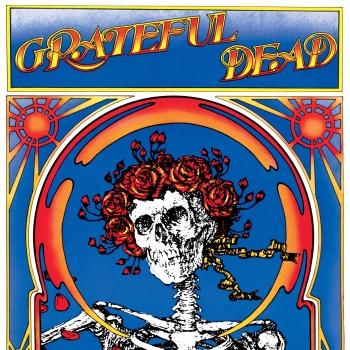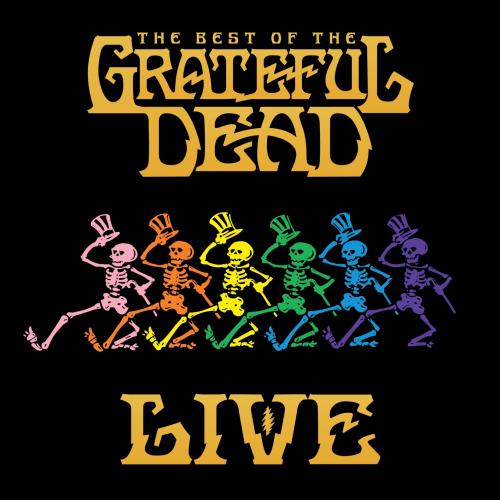
The Best Of The Grateful Dead Live (Remastered) Grateful Dead
Album info
Album-Release:
2018
HRA-Release:
23.03.2018
Album including Album cover
I`m sorry!
Dear HIGHRESAUDIO Visitor,
due to territorial constraints and also different releases dates in each country you currently can`t purchase this album. We are updating our release dates twice a week. So, please feel free to check from time-to-time, if the album is available for your country.
We suggest, that you bookmark the album and use our Short List function.
Thank you for your understanding and patience.
Yours sincerely, HIGHRESAUDIO
- 1 St. Stephen (Live at The Fillmore West, San Francisco, CA 2/27/69) 06:39
- 2 Bertha (Live at The Fillmore East, New York, NY 4/27/71) 05:43
- 3 Wharf Rat (Live at The Fillmore East, New York, NY 4/26/71) 08:32
- 4 Sugar Magnolia (Live at The Olympia Theatre, Paris France 5/4/72) 07:11
- 5 Jack Straw (Live at The Olympia Theatre, Paris France 5/3/72) 04:50
- 6 Truckin' (Live at Lyceum Theatre, London, England 5/26/72) 13:07
- 7 Morning Dew (Live at Lyceum Theatre, London, England 5/26/72) 11:28
- 8 Brown-Eyed Women (Live at Tivoli Concert Hall, Copenhagen, Denmark 4/14/72) 04:40
- 9 The Music Never Stopped (Live at The Great American Music Hall, San Francisco, CA 8/13/75) 44.1kHz 05:28
- 10 Estimated Prophet (Live at Barton Hall, Cornell University, Ithaca, NY 5/8/77) 08:44
- 11 Friend Of The Devil (Live at Radio City Music Hall, New York, NY 10/27/80) 07:32
- 12 Feel Like A Stranger (Live at the Warfield Theatre, San Francisco, CA 10/4/80) 05:46
- 13 Fire On The Mountain (Live at Radio City Music Hall, New York, NY 10/31/80) 06:47
- 14 Bird Song (Live 1980) 07:38
- 15 Ripple (Live at the Warfield Theatre, San Francisco, CA 10/4/80) 04:28
- 16 Eyes Of The World (Live at Nassau Coliseum, Uniondale, NY 3/29/90) 16:16
- 17 Touch Of Grey (Live at Rich Stadium, Orchard Park, NY 7/4/89) 96kHz 06:31
- 18 Blow Away (Live at John F. Kennedy Stadium, Philadelphia, PA 7/7/89) 96kHz 12:21
- 19 So Many Roads (Live at Soldier Field, Chicago, IL 7/9/95) 44.1kHz 09:35
Info for The Best Of The Grateful Dead Live (Remastered)
The Grateful Dead forged its legend on the road, traveling countless miles between 1965 and 1995 to perform a world record 2,318 shows for millions of devoted fans. The band's refusal to ever play a song the same way twice has endeared generations of fans, many of whom prefer certain live versions of songs over their studio counterparts, and garnered the popular phrase among Dead Heads: "There is nothing like a Grateful Dead concert."
Made for die-hard Dead Heads and new fans alike, THE BEST OF THE GRATEFUL DEAD LIVE is the ultimate live collection, a two-disc set with recordings selected from the band's official live albums on Warner Bros. and Arista, plus a few tracks from their many archival live releases, beginning with "St. Stephen" - from the group's first official live album, 1969's Live/Dead - and ending with the poignant "So Many Roads," taken from the band's final concert at Chicago's Soldier Field in July of 1995
"We wanted to follow up the 2015 The Best Of The Grateful Dead studio set with a live counterpart, and have focused our efforts on the band's primary live albums as well as some key tracks from archival concert releases," says band archivist and producer David Lemieux. "Just as there was nothing like a Grateful Dead concert, there is also nothing like a live Grateful Dead recording; it's no secret that as good as the Dead's studio recordings were, they excelled in front of an audience, and this set provides an overview of just how great the Dead were live in concert."
The live albums the band released during its 30-year career are the primary source for the collection, including tracks like "Bertha" from Grateful Dead (Skull & Roses) (1971), "Fire On The Mountain" from Dead Set (1981), and "The Music Never Stopped" from One From the Vault (1991). A testament to its ongoing popularity, the revered double-album Europe '72 (1972), is represented by no less than five tracks, including "Sugar Magnolia," "Jack Straw" and a searing rendition of "Morning Dew."
Other performances on the set were selected from the growing number of live releases that have emerged since the death of founding member Jerry Garcia in 1995. Some of those recordings include "Touch Of Grey" from Truckin' Up To Buffalo (2005), a 1990 version of "Eyes Of The World" with saxophonist Branford Marsalis featured on Wake Up To Find Out (2014), and "Estimated Prophet," which debuted earlier this year as part of Cornell 5/8/77, a recording of the Grateful Dead's mythic show at Cornell University in 1977, thought by many to be the band's greatest live performance.
Grateful Dead
Digitally remastered
From the 1960s until the 1995 death of guitarist, singer-songwriter Jerry Garcia, the Grateful Dead played roughly 2,300 long, freeform concerts that touched down on their own country-, blues and folk –tinged songs, and on a similarly wide range of cover versions. Along the way, they popularized the concept of the jam band, influencing thousands of songwriters and basement improvisers and earning themselves maybe the most loyal fans a rock band have ever had.
Nearly as famous as the band itself were its legions of "Deadheads" — predominantly white men who have lovingly preserved the era that spawned the Dead by emulating their Summer of Love predecessors' philosophy and that period's accoutrements: tie-dye clothing, hallucinogenic drugs, and the Dead's music. These fans supported the band with an almost religious fervor, following the group around the country, trading tapes of live concerts (something the band allowed as long as it wasn't for profit, providing prime spots for tapers at shows), and providing a synergy between band and audience that was unique in rock. In true psychedelic style, the Grateful Dead preferred the moment to the artifact — but to keep those moments coming, the Dead evolved into a far-flung and smoothly run corporate enterprise that, for all its hippie trimmings, drew admiring profiles in the financial and mainstream press.
Lead guitarist Jerry Garcia took up guitar at 15, spent nine months in the Army in 1959, then moved to Palo Alto, where he began his long-standing friendship with Robert Hunter, who late became the Dead's lyricist. In 1962 he bought a banjo and began playing in folk and bluegrass bands, and by 1964 he was a member of Mother McCree's Uptown Jug Champions, along with Bob Weir, Ron "Pigpen" McKernan, and longtime associates Bob Matthews (who engineered Dead albums and formed the Alembic Electronics equipment company) and John Dawson (later of New Riders of the Purple Sage).
In 1965 the band became the Warlocks: Garcia, Weir, Pigpen, Bill Kreutzmann, and Phil Lesh, a former electronic-music composer. With electric instruments, the Warlocks debuted in July 1965 and soon became the house band at Ken Kesey's Acid Tests, a series of public LSD parties and multimedia events held before the drug had been outlawed. LSD chemist Owsley Stanley bankrolled the Grateful Dead — a name from an Egyptian prayer that Garcia spotted in a dictionary — and later supervised construction of the band's massive, state-of-the-art sound system. The Dead lived communally at 710 Ashbury Street in San Francisco in 1966–67 and played numerous free concerts; by 1967's Summer of Love, they were regulars at the Avalon and Carousel ballrooms and the Fillmore West. MGM signed the band in 1966, and it made some mediocre recordings. The Dead's legitimate recording career began when Warner Bros. signed the band. While its self-titled 1967 debut album featured zippy three-minute songs, Anthem of the Sun (Number 87, 1968) and Aoxomoxoa (Number 73, 1969) featured extended suites and studio experiments that left the band $100,000 in debt to Warner Bros., mostly for studio time, by the end of the 1960s. Meanwhile, the Dead's reputation had spread, and they appeared at the Monterey Pop Festival in 1967 and Woodstock in 1969.
As the Seventies began, the Dead recouped its Warner debt with three comparatively inexpensive albums — Live/Dead (Number 64, 1969) (recorded in concert at San Francisco's Fillmore West in February and March of 1969), Workingman's Dead (Number 27, 1970), and American Beauty (Number 30, 1970). The former featured extended psychedelic explorations, such as the classic "Dark Star," while in sharp contrast the latter two found the Dead writing concise country-ish songs and working out clear-cut, well-rehearsed arrangements. Workingman's Dead (including "Uncle John's Band" [Number 69, 1970] and "Casey Jones") and American Beauty (including "Truckin'" [Number 64, 1971], "Ripple," and "Box of Rain") received considerable FM radio airplay, sold respectably, and provided much of the Dead's concert repertoire.
With a nationwide following, the Dead expanded its touring schedule and started various solo and side projects (aside from the band members' own works, many Dead members also appeared on the half-dozen-plus albums Dead lyricist Robert Hunter began releasing in 1973). The group worked its way up to a 23-ton sound system and a large traveling entourage of road crew, family, friends, and hangers-on — most of whom would later become staff employees complete with health-insurance and other benefits, as the Dead evolved into an efficient and highly profitable corporation. The Dead finished out its Warners contract with a string of live albums including 1971's Grateful Dead, a.k.a. "Skull and Roses" (Number 25), which introduced more concert staples such as "Bertha" and "Wharf Rat." In 1973 the Dead played for over half a million people in Watkins Glen, New York, on a bill with the Band and the Allman Brothers. By then the group had formed its own Grateful Dead Records and a subsidiary, Round, for non-band efforts.
Read more: http://www.rollingstone.com/music/artists/the-grateful-dead/biography
This album contains no booklet.









